
Penang is a beautiful island; it is not only blessed with the bounties of nature, but it’s also one of the most beautiful places to visit in Malaysia. Penang has its fair share of magnificence with a rich culture that looks back on an impressive history and landscapes that would make anyone jealous.
And while Penang on its own is pretty remarkable, if there’s one place in Penang that deserves praise, it is Cheong Fatt Tze or the Blue Mansion.

The Blue Mansion is situated in Leith Street, the UNESCO world heritage site in Georgetown, Penang, one of the most beautiful spots in Malaysia. For those who visit Penang, the Blue Mansion or Cheong Fatt Tze is one of the best iconic boutique hotels that bestows them with a view of the magnificence of the past and invites them on a tour of its heritage and culture. Indeed, the Blue Mansion has a rich and versatile history second to none.
Astonishingly, the Blue Mansion is not just one of the heritage buildings in Georgetown. Instead, the once majestic mansion is now a converted hotel that retains the ethereal spirit of the mansion and combines it with contemporary style to give you the perfect retreat.
Make sure to watch our Blue Mansion tour video! It is at the end of this article.
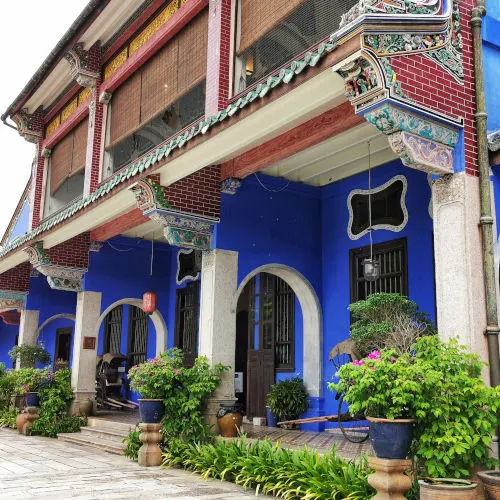
A Little About the Blue Mansion
Cheong Fatt Tze can be traced back to the late 19th century when the Chinese industrialist Cheong Fatt Tze decided to build a palace-like residence worthy of his descendants. Called the Rockefeller of the East, he epitomizes the rags to riches story of the migrant from China to Malaysia. Envisioning nothing short of regality, Cheong Fatt Tze ordered the construction of an impressive structure housing 38 rooms, 7 staircases, 220 windows, and 5 granite courtyards. Cheong Fatt Tze soon moved to the mansion and made it his private residence, from where he would conduct various business activities and hold office.
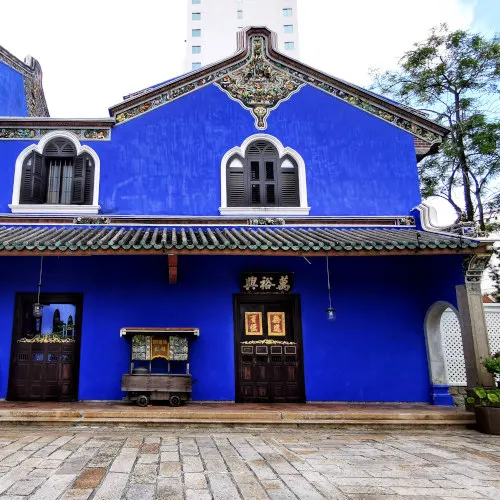
Architectural Beauty: A Detailed View
The Blue Mansion beholds one of the most beautiful designs in Malaysia; it boasts an architectural prominence that only a few know. Determined to make a residence enriched with elegance and brilliance, Cheong Fatt Tze refused to give it away to Anglo-Indian houses' then trending architectural style and insisted on building a simplistic and traditional Chinese design. He hired only the most prolific architects and engineers, shipped artisans from Southern China, and even went to shipbuilding materials from Scotland. Cheong Fatt Tze’s vision became a reality with architectural prowess and an eye for detail: the Blue Mansion was born.
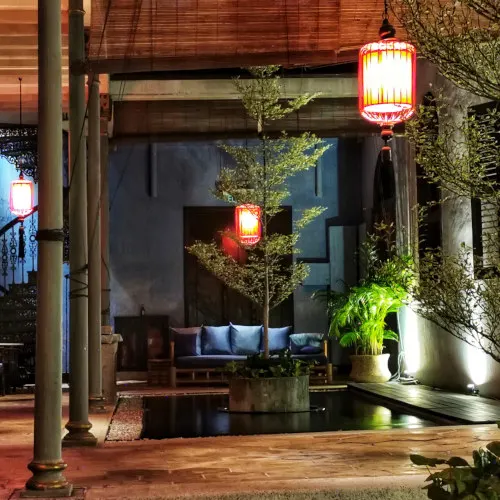
Unfortunately, the descendants of Cheong Fatt Tze could not do much justice to the mansion. Near to deterioration, the Blue Mansion was saved by a group of conservationists, who restored it by donating furniture and other materials. Today, most of what you see at the mansion is what has been given by the people of Penang.
The restoration project won UNESCO’s top heritage award for Most Excellent Project in 2000. Lonely Planet also the Blue Mansion as one of the 10 greatest Mansions in the World in 2011.
A Guided Night Stay at the Mansion: Insider’s View
If you’re not planning on staying a night at the mansion, you can join a guided tour of the place for a small admission fee. The daily tour is conducted in English and Mandarin by a trained guide, which gives details of the history of the mansion, its origin, architecture, and every detail of the building.
This simple read will give you some essential detail before joining the tour.
1. The Exterior: A League of its Own
As surprised as you might be at this, the exterior of the Blue Mansion deserves a guided tour of its own.
Ridged Roof
You can mark the building for its roof ridges and gables right away. However, what sets them apart from the ridges you'll find on most buildings is what they're made of; broken porcelain bowls, each extremely thin and unglazed to make them flexible to the construction. These porcelain bowls are the size of rice bowls and are lined to make a uniform roof. If you didn’t know, the use of porcelain bowls isn’t that uncommon in China; this technique is dubbed the Chien Nien, a Hokkien and Teochew skill, and is still used today.
How these roofs were built is an admirable story. First, the artisans would fill pails with bowls and take them up to the rooftop. Then, they would break the bowls into tiny pieces and arrange them into flora and fauna displays, often adding scenes from mythological tales and fixing them with lime putty.
Dark hues like Indigo and violet were extremely rare natural blue dyes in the olden ages. The indigo hue was extracted from Indigofera arrecta or Indigofera tinctoria plant dye, grown by British India. The same rare tincture was used in the Cheong Fatt Tze mansion, and since this shade was extremely rare then, the mansion is also known as the Blue Mansion.
2. The Main Hall
Like most traditional Chinese houses, the main hall of the Blue Mansion is also the formal area, where once only men were allowed. Today, it invites everyone in to take in the view; traditional furniture shows how men of the time would sit here to discuss business, play cards, drink tea, and exchange gossip before leaving the mansion.
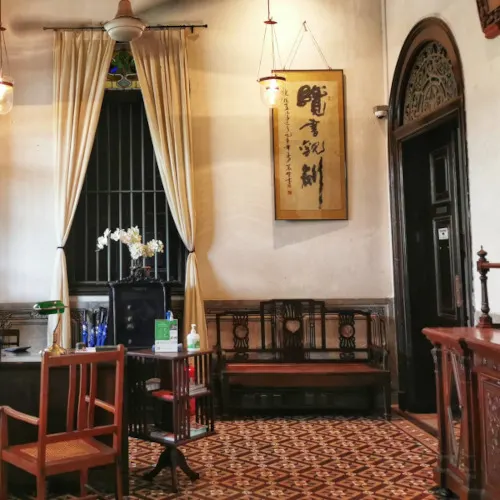
In the old days, there used to be a gold-leafed timber filigree screen that would separate male visitors and the women of the house. The screen had a very interesting structure, with holes through which the ladies could see the visitors without being seen themselves.

Art nouveau stained-glass windows with 48 panels are visible in the main hall. These panels were left without even proper shards of glass back when the mansion was under threat of damage and were restored using imported materials and frames by a Malaysian stained-glass worker who had worked in Germany.
At the main hall, you’ll find the main check-in and reception of the hotel, leading to the main courtyard with a boutique on the right and administrative offices on the left.
3. Main Courtyard
The main courtyard is the largest of Blue Mansion’s 5 courtyards. It holds 4 cast-iron columns imported from India and Scotland.
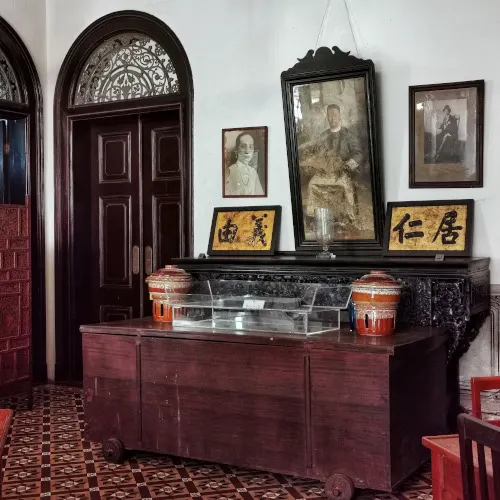
The courtyards are open to facilitate visitors or nature’s gifts. For example, the courtyard houses 17-inch embedded copper gutters that channel out all rainwater. The same technique is used in ceiling spaces for sustainability and wealth (Chien).

The mansion is also known as the Feng Shui Perfect as many visitors have tested the strength of its Chi Point in the courtyard.
The courtyard is where guests have complimentary breakfast and even acts as a venue for events and weddings.

A small gift shop awaits you with trinkets and souvenirs on the left door to the main courtyard entrance.
4. Downstairs Museum Room
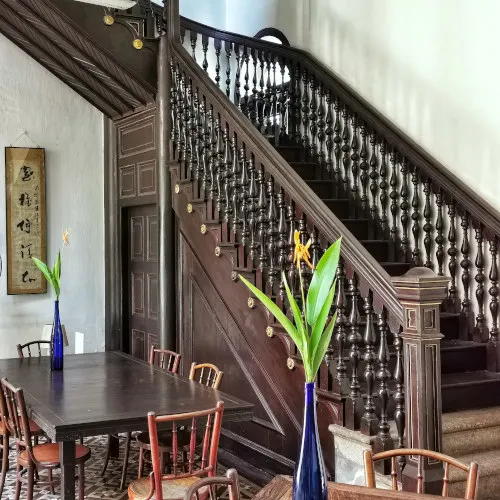
This room held memorabilia and pictures from back when the house was used by Cheong Fatt Tze, who willed that nothing in the house could be sold until the death of his youngest son. Here you’ll learn about the despair and the darkest time of the Blue Mansion; from its ruin to its financial loss of face, everything is detailed.


5. Upstairs Museum Room
The upstairs museum room is an archive of clothes, fabrics, and similar leftover collections found after the house auction in 1990. Here, learning about the fascinating tale of Cheong Fatt Tze’s eight wives and disowned sons truly gives you a thought-provoking insight into history.
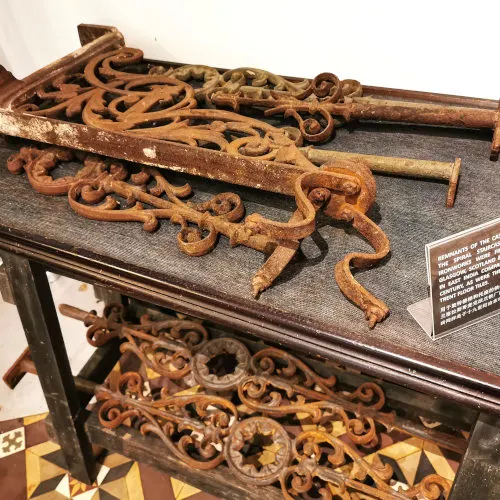
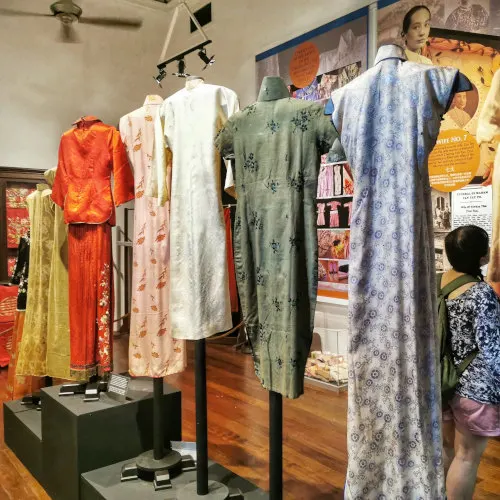

6. Upstairs Hall
The staircase leads you upstairs to the hall, where artifacts, bowls, musical instruments, and mahjong cards are displayed.
One of the panels along the upstairs hall depicts Cheong Fatt Tze’s home in Taipu, his birth city, and where he was buried. The same panel shows his house in Medan too.

This panel details the story of Cheong Fatt Tze’s winery, Chan Yu Winery in Yantai, Shantung, the first winery that based wine on grapes and not rice like the Chinese were drinking. The panel details the collaborations of Cheong Fatt Tze with Hakka compatriots and how his winery came to be nationalized.
The remaining panels highlight the mansion in modern times.
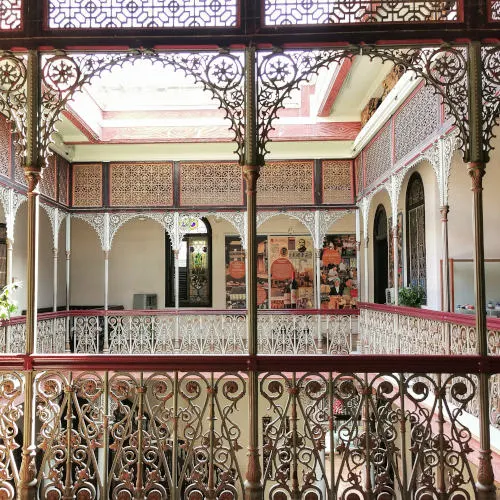

7. Indigo Restaurant

The Indigo Restaurant was conceptualized--by the Architect Laurence Loh who had restored the mansion to its former glory--as a marriage between East and West and combines contemporary and classic styles to enhance cuisine as a nod to the ever-evolving culinary palette by the executive chef. The restaurant boasts eclectic designs, memorabilia, artifacts made by local artists, architects, designers, and writers, ethnic fabric installations, and lanterns. The restaurant seats 50 diners for lunch and dinner and can also host private dining.

8. Side Courtyards

The left and right wings of the mansion boast side the remaining 4 courtyards, each sporting a distinct style. The left is the feminine wing, and the right is the masculine wing; they house 18 bedrooms and suites for guests.
You will see the original Scottish cast-iron spiral staircase at the back of the right wing, winding its way up to the first floor.

9. Oriental Garden
Cheong Fatt Tze envisioned a Chinese-style landscaped water garden but could not complete it due to his death in 1916. The materials for the garden remained untouched until the Japanese invasion of Penang in 1941 when a Japanese general sent them to Japan. The Oriental Garden itself was envisioned by Laurence Loh, who added his flair to the garden in 2016. The garden features running water, elevated pools, hand-blown glass sculptures, and beautiful light fixtures. Though the garden is closed to visitors, it is only open to hotel guests staying at the mansion and is even a venue for special occasions.

The room
We stayed at the Blue Mansion for a night and here are some images we took. The room visit is not included in the guided tour.

It is the actual bedroom of a hundred year’s old Chinese house converted with modern comfort. There is mostly antique furniture, with an oversized window, and a high ceiling. It is also equipped with a wide array of amenities. An espresso machine in the room was my favorite.
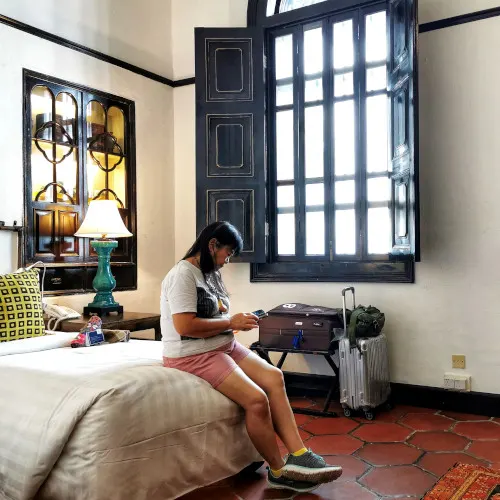
The private bathroom is furnished with an old-style basin with separate hot and cold taps. The black and white mosaic floor tiles are frequently used in traditional Peranakan houses.
Free breakfast is served in the side courtyard just outside of our room.
Watch our video shot during our visit at the Blue Mansion.
If you have come so far reading this blog post, don’t miss out on the Blue Mansion tour video we shot during our holiday. Click the image below to watch on YouTube (shot in high definition!).
Other best places to visit in Malaysia
If you like Blue Mansion, you may also want to read about other attractive places to visit in Malaysia. Here are two places we have picked for you.
- Genting Skyworld Theme Park has already opened to the public in early 2022. Check out the latest Theme Park in Asia
- Check out our 3D2N trip to Pangkor Laut Resort, located on a private island. It is one of the most lavish island resorts in Malaysia. Indulge yourself in pure luxury.

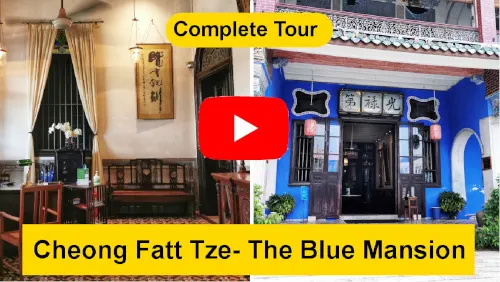
22 Best Places to Visit in Penang Island (2024 update)
Wednesday 21st of August 2024
[…] I would rank Blue Mansion as one of Penang’s best places. Please read our blog post about the complete tour of the Blue Mansion here. […]